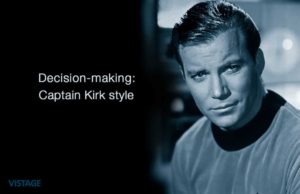Training leaders for decision-making dilemmas

In today’s increasingly complex world, making decisions has become more difficult. As F. Scott Fitzgerald said, “the test of a first-rate intelligence is the ability to hold two opposed ideas in the mind at the same time and still retain the ability to function.”
Roger Martin suggested that the best leaders have this capacity and the ability to reject a false choice and create a new option. In other words, the best leaders can grasp the tension between contrasting ideas and see if a third alternative — in which both sets of needs are met — is possible.
How do we train leaders to do this? Through deliberate practice — that is, by engaging them in real or simulated experiences in which they need to resolve conflicts.
Here’s a fictional example: In one of the Star Trek movies, the future-Captain Kirk was faced with a leadership test as a cadet. Kirk kept failing the test until he figured out that the software running it was designed to ensure that everyone lost. So he hacked the software. When he beat the challenge, he was accused of cheating — because, as the testers said, the mission was impossible. Kirk responded that as a leader faced with a mission, his job was to make it possible, which included the right to hack the software. As we all know, that “victory” portends many more in which he goes outside the “rules-box” to figure out a solution.
And here’s a real example: Unlike all presidents after World War II, Ronald Reagan did not accept the premise that the world needed to consist of the “American-led West versus the Soviet-led East.” With a different approach, Reagan set up conditions for the Soviet Union to implode.
What do you do when the conditions presented to you limit your ability to achieve your goal? Share with us how you reject false choices and create new options to achieve results!

